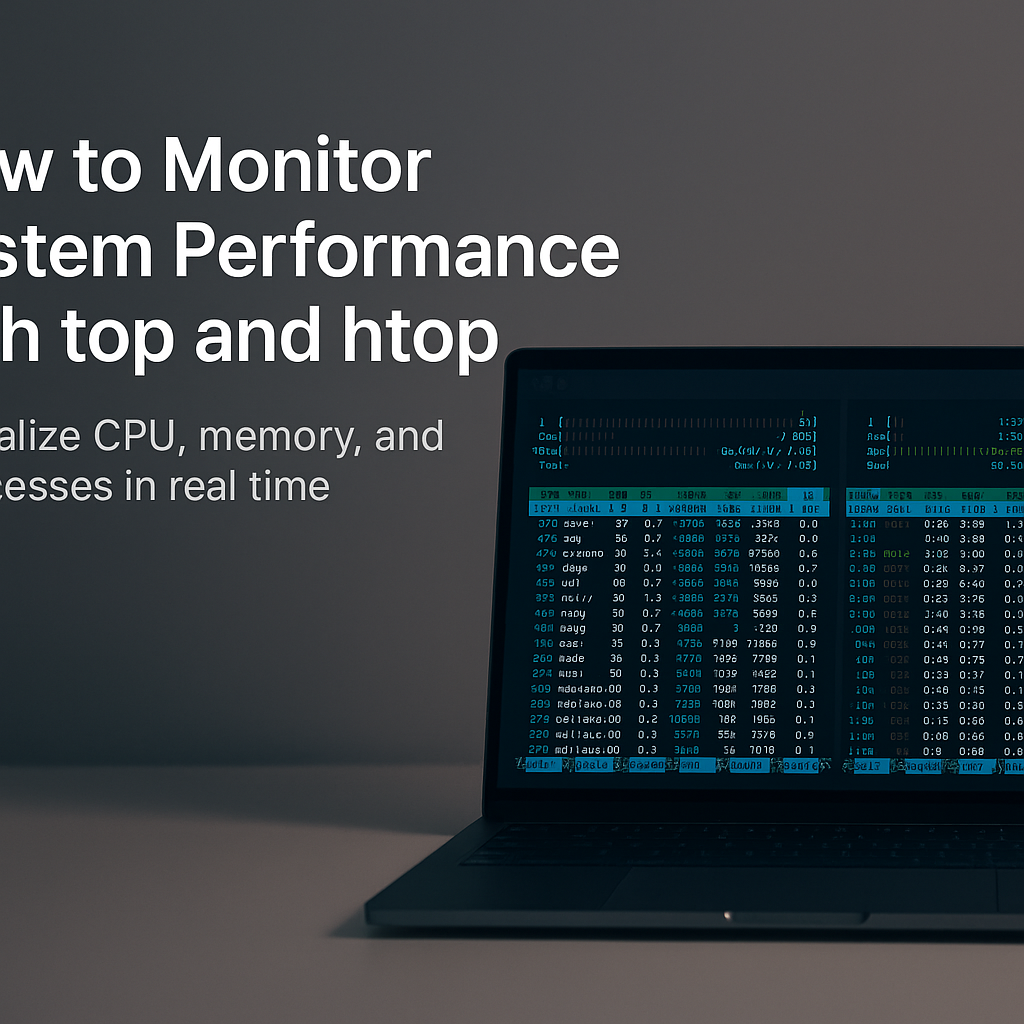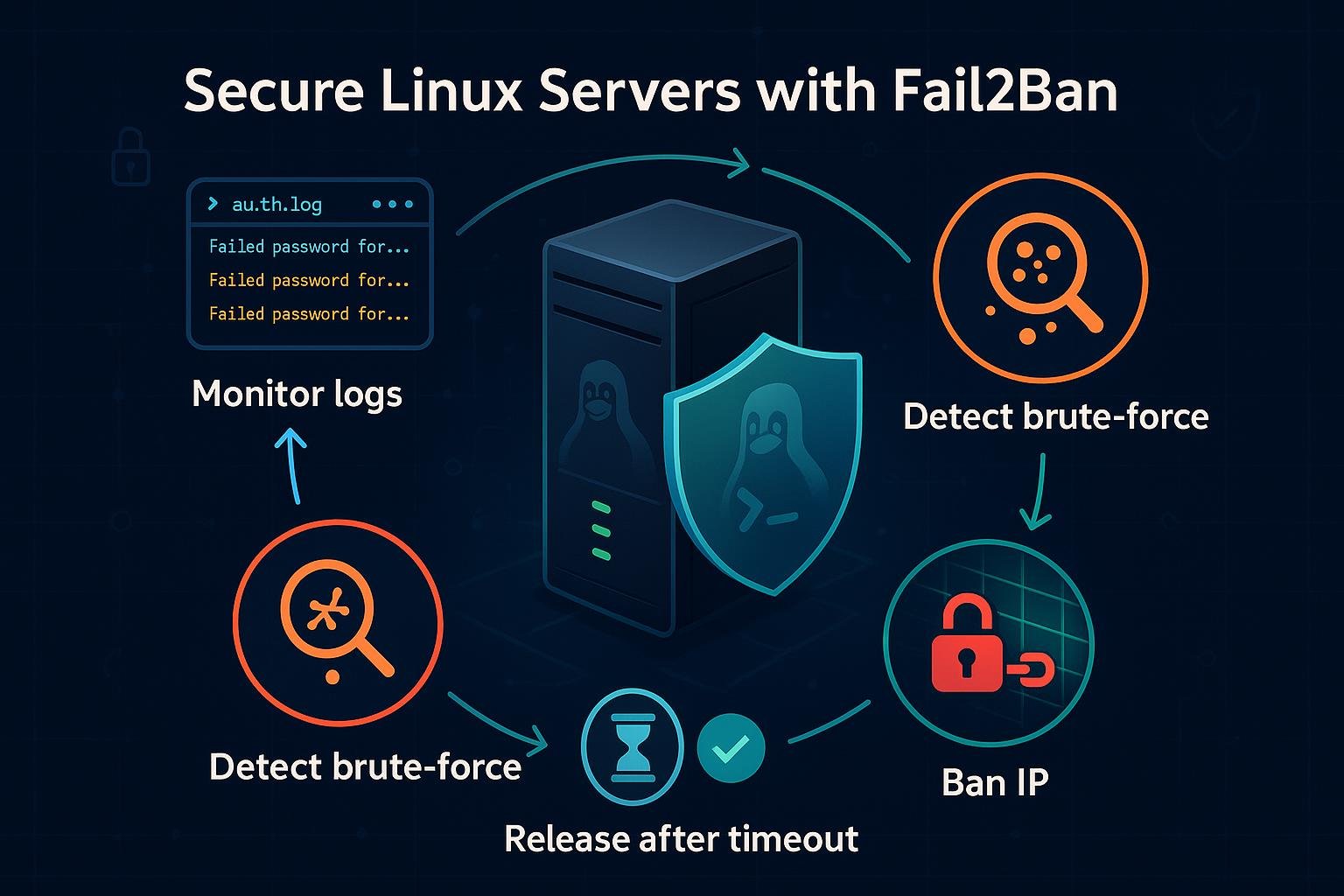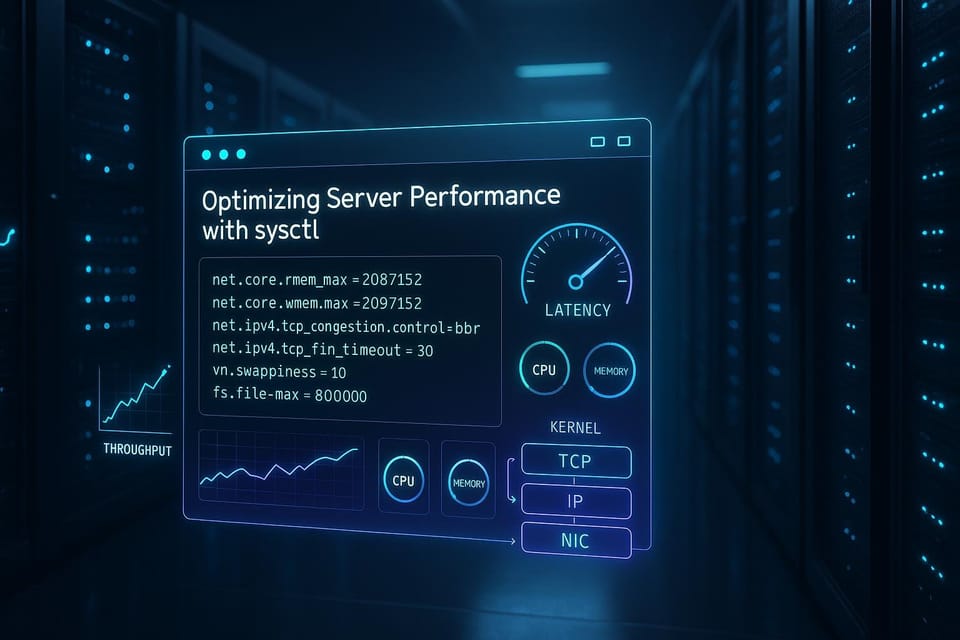How to Monitor System Performance with top and htop
Learn how to monitor system performance on Linux using top and htop with step-by-step, beginner-friendly guidance. Ideal for Linux and DevOps beginners seeking real-time process and resource insights.

Short introduction
Monitoring system performance helps you spot CPU, memory, and I/O bottlenecks before they affect users. This short guide shows practical ways to use top and htop — two core tools available on most Linux systems — and gives clear examples you can try right away.
Why monitor performance (quick checks)
Before diving into top/htop, it helps to know a few quick checks to capture system state. These commands are useful to run once before you start an interactive session so you have a baseline.
Example terminal checks:
# uptime - shows load averages
$ uptime
10:42:13 up 5 days, 4:33, 2 users, load average: 0.15, 0.10, 0.07
# free -h - shows memory usage
$ free -h
total used free shared buff/cache available
Mem: 15Gi 6Gi 1.5Gi 128Mi 7Gi 8Gi
Swap: 2.0Gi 0B 2.0Gi
# iostat (from sysstat) - quick I/O stats
$ iostat -x 1 2
Run these once to note load, memory pressure, and I/O trends. They tell you what to look for when you open top or htop.
Using top — basics and practical tips
top is installed by default on most Linux distributions and provides a live, text-based view of processes and system resource usage. It’s lightweight and scriptable.
Start top:
$ top
Basic interactive keys (while top is running):
- P — sort by CPU usage
- M — sort by memory usage
- N — sort by PID
- T — sort by running time
- k — kill a process (enter PID and signal)
- q — quit
Batch mode for scripts or capturing a snapshot:
# non-interactive snapshot sorted by CPU, one iteration
$ top -b -n 1 -o %CPU | head -n 20
Notes and tips:
- top shows per-CPU and overall CPU usage, memory, swap, load averages, and a process list.
- Use top's batch mode (-b -n) to capture output for logs or automated monitoring.
- The column headers can vary by top implementation; check man top for platform-specific options.
Using htop — interactive and user-friendly
htop is an improved, colorful alternative to top with a more intuitive interface. It supports mouse, tree views, easy sorting, and interactive process management.
Start htop:
# if not installed: Debian/Ubuntu
$ sudo apt install htop
# run htop
$ htop
Common interactive shortcuts inside htop:
- F2 — Setup (choose columns, meters)
- F3 — Search for processes by name
- F4 — Filter by substring
- F6 — Sort by a column you choose
- F9 — Kill a process (pick signal)
- F5 — Toggle process tree view
- Space — Tag a process for group operations
Examples:
# view only processes for a user
$ htop -u alice
# view only specific PIDs (comma-separated)
$ htop -p 1234,2345
Why use htop:
- Easier for beginners: keys are labeled at the bottom and the color bars quickly convey usage.
- Interactive filtering and tree view make it simple to find parent/child process relationships.
- You can configure which columns to display (CPU%, MEM%, TIME+, command, etc.) via F2.
Advanced usage: sorting, filtering, and remote snapshots
Both tools support techniques to reduce noise, focus on problem processes, and gather snapshots for analysis.
Sort and limit output:
# show top 10 memory users using ps for scripting
$ ps aux --sort=-%mem | head -n 11
# top snapshot sorted by memory (procps-ng top)
$ top -b -n 1 -o %MEM | head -n 20
Remote monitoring via SSH:
# capture a one-shot top output from a remote host
$ ssh user@remotehost 'top -b -n 1 -o %CPU' > remote-top-$(date +%F-%T).txt
Automated alerts and logs:
- Use periodic top/ps snapshots in a cron job and parse results to detect abrupt CPU or memory spikes.
- Combine with simple scripts to email or push alerts when thresholds are exceeded.
Example: a small script to log top CPU hogs (run from cron):
#!/bin/bash
OUTDIR=/var/log/top-snapshots
mkdir -p "$OUTDIR"
top -b -n 1 -o %CPU | head -n 30 > "$OUTDIR/top-$(date +%F-%T).log"
Be aware of differences between systems: top flags and column names can vary between distributions (procps vs BSD variants). Use man top to confirm available options.
Comparing top and htop — when to use each
Both tools have strengths; choose based on needs and environment.
Quick comparison example (description-style):
top:
- Minimal, always available on many systems
- Easy to use in scripts (-b -n)
- Lower overhead in constrained systems
htop:
- Colorful, interactive, mouse support
- Tree view, easy sorting/filtering
- Better for live troubleshooting and rapid navigation
Guidelines:
- Use top for automated snapshots and remote non-interactive logging.
- Use htop for hands-on troubleshooting when you need to explore process relationships and interactively kill or renice processes.
- If you only have SSH access to a minimal rescue environment, top is more likely to be available.
Common Pitfalls
- Assuming column names and command-line options are identical across Linux distributions — verify with man top / man htop.
- Relying on a single snapshot — spike behavior can be transient; use repeated samples or tools like sar/iostat for trends.
- Killing processes without checking dependencies — abruptly killing a parent process can orphan or destabilize services.
Next Steps
- Install htop on a test machine and practice F-keys (F2/F3/F4/F5/F6/F9) until navigation feels natural.
- Create a simple cron job to capture top snapshots and review logs weekly for trends.
- Explore other tools (vmstat, iostat, sar, atop, nmon) to get a fuller picture of I/O and long-term trends.
If you want, I can provide a ready-to-run cron script and a simple parser that emails you when a process exceeds specified CPU or memory limits.
👉 Explore more IT books and guides at dargslan.com.




